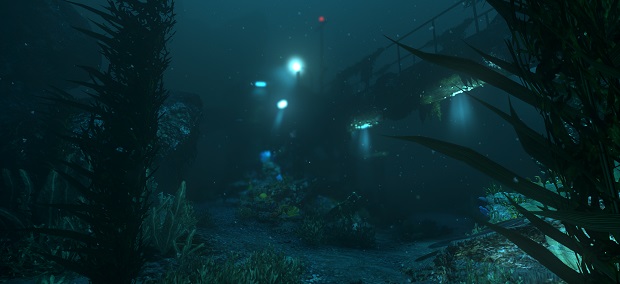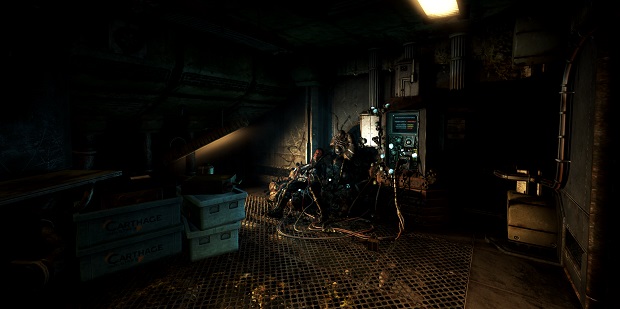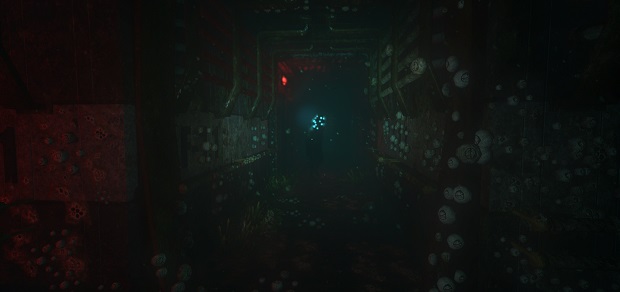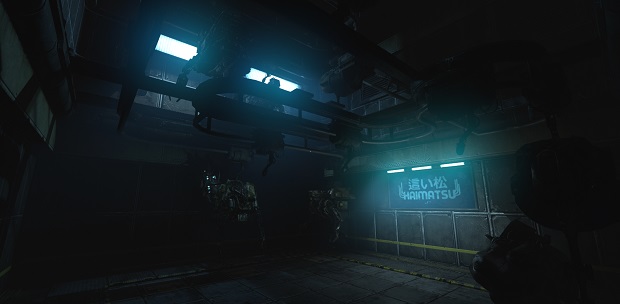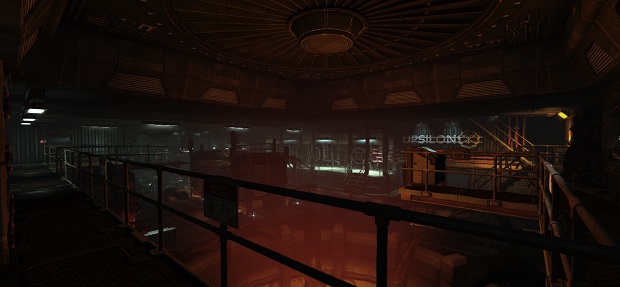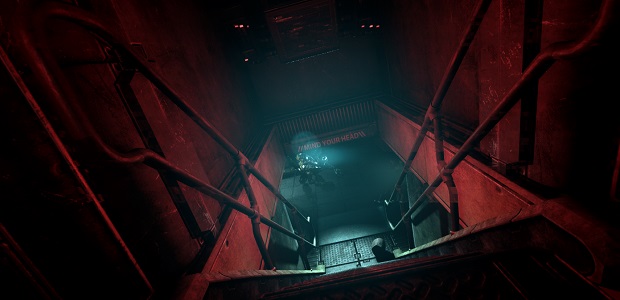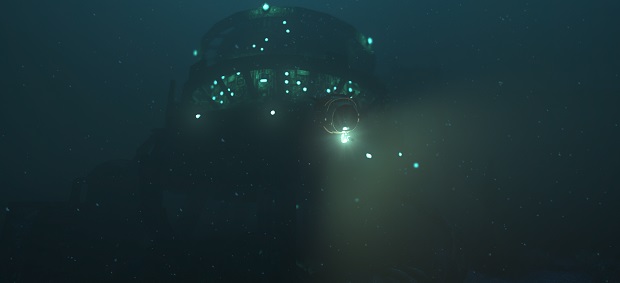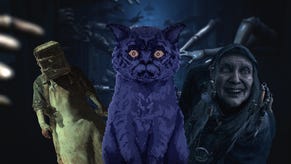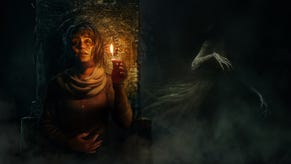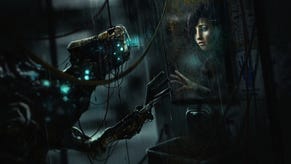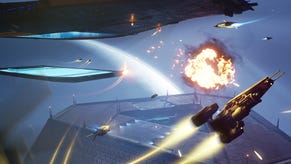Ghostly Machines: Hands On With SOMA's Opening Hours
SOFAR SOGOOD
Over the weekend, I played the first third of SOMA [official site], the new game from Frictional, the horror maestros behind Penumbra and Amnesia: The Dark Descent. If the tone and quality of the game remain approximately similar for the remainder of the running time, Frictional will have delivered their most accomplished title to date, but it might also be their least terrifying. That might be a good thing.
There are scares aplenty in SOMA's drowned world, but it isn't a haunted house or a ghost train. Amnesia's particular strength was in its ability to inspire breathless enthusiasm about its most startling sequences: the disturbed surface of the water, recreations of torture, an unlit prison labyrinth. The bulk of the game, and the castle that contains it, exists as a form of scaffolding to support the few highlights. Structurally, it is sound but unspectacular, a murky slab of architecture that exists simply to perform a function.
Dark Descent's function was to horrify and to create a false sense of agency for its monstrous inhabitants. For the trick to work, you had to believe in the illusions of persistent (un)life within the castle, illusions skilfully crafted through the magnificent sound design and treacherous layout of rooms and corridors. Once you had seen the code behind the curtain – which was bound to happen the umpteenth time you died in a certain section, if not before – the game lost much of its power.
There's a parallel with horror films, which so often achieve their goals more effectively before showing their monsters in full light; in games, it's the behaviour of a creature which must remain obscure. As long as we are puzzled by the inner workings of the beast, we can convince ourselves that anything is possible.
Alien: Isolation maintained the credibility of its creature more effectively than most horror games and it utilised a variety of methods to do so. The baggage that comes with a monster that is part of popular culture can help and hinder when depicting it yet again, and Creative Assembly accept that, cleverly playing into assumptions about the alien's behaviour and abilities. A dash of unpredictability alongside some recognised traits makes for a convincingly creepy puppet, but there's still an unspoken agreement that the audience will ignore the strings.
SOMA doesn't rely on strings, although that doesn't become apparent until it has shown its hand. After half an hour, the scene is set and the game begins to feel like the sci-fi version of Amnesia I feared it might be. “Feared” is a double-edged verb in this instance. I hoped that SOMA would be something more than Amnesia with a new skin but I also accepted that even if that's all it were, it'd still scare me out of my seat.
As I crouched behind a computer terminal, listening to footsteps, loud crashes and the sound of SOMETHING in distress, I felt like I had returned to uncomfortable surroundings. The dank stone walls were now corroded metal surfaces but the place was recognisable, right down to the semi-organic corruption snaking through the vents and ducts. I felt like I knew the game's rhythm – run, hide, cower, wait, puzzle, run, hide, cower, wait, puzzle – and that was disappointing, given how quickly the familiar beat had fallen into place.
That didn't last for more than a few minutes and within an hour, SOMA has found its own rhythm and its own identity.
Where Amnesia was a gothic, Lovecraftian horror game, SOMA is a science fiction game with a horrific backbone. It's hard to point at anything in Penumbra or Amnesia that doesn't add to the sense of dread, doom and claustrophobia, whereas SOMA is packed with all manner of ideas. Grand, exciting, strange, brilliant ideas. It's such a relief when the major conceits of the weird science that drives the plot are punctured and questioned. If you've seen any of the videos that have been released (and you should; they're not assumed knowledge but nor should they be treated as marketing-spoilers) you'll know that SOMA is concerned with the idea of ghosts in machines. The transfer of memories and personality into digital form, and the storage of a person's identity within a robot.
What could possibly go wrong?
More than you imagine. The smartest thing about SOMA is that it has kept back as much as it has shown. Yes, it raises questions about post-human life and the terror of existing without a body, or existing within a body that doesn't look or behave as expected, but that is one part of the whole. It's also a more nuanced part than you might have imagined. There is sympathy for the wounded and confused, even those that have become dangerous, and there's a streak of dark humour that falls into place so naturally that I didn't realise how welcome it had been until I'd finished the preview build.
Frictional seem to be in a playful mood. There's off-screen guidance from an authority figure who will set off the Polito alarm in the minds of certain players [if you're not one of those players, resist googling that], and SOMA is well-aware of the history it's toying with, confounding expectations even as it sets them. Most surprising for the seasoned Frictional fan, perhaps, is the talking – there's quite a lot of it and it's all of a much higher quality, in terms of both acting and writing, than the witterings of exposition-dumping quest-giver Heinrich Cornelius Agrippa.
There are problems with 'quest-giving', however. Earlier, I said that SOMA avoids the predictable rhythms of the running-away-and-hiding horror game and it's at its best when it doesn't fall into any rhythm at all. By the end of the preview build, the flow of objectives had started to remind me of another horror series, however. Like Isaac, the robust engineer of the Dead Space trilogy, I was spending a lot of time fixing things as I attempted to move from one area to another. The anticipation of seeing something new became tempered by the expectation that I'd have to reboot the power as soon as I arrived.
That's the game's most significant weakness. When there are safe passages in which to deliver story, or panicky interludes featuring what appears to be the digital ghost of a haunted disco diver (“Don't look at it”, you're told by your guide in a brilliantly precise summation of a new game mechanic that is also decent advice within the game's fiction), SOMA feels remarkably fresh and almost entirely shakes off the ghost of Frictional past. I'm not entirely sure about the player character's too-easy acceptance of some of the more outrageous demands on his time and safety, but I can tolerate that particular disbelief gap because his acceptance allows the story to move at a healthy clip. The reliance on repairs or similar tinkering had the opposite effect, introducing an element of predictable pathfinding between points of interest.
It's a minor quibble though. The portion I've played, just less than a third of the total according to Frictional, took me around three and a half hours to play. Twelve hours seems like a good length for a game that is built around a sense of urgency – an urgency that is about more than running and escaping – but there will need to be some unexpected twists and turns to keep the formula fresh.
There's every reason to believe that those ingredients will be in place. SOMA marks a huge shift in Frictional's work and while I don't expect it to be as divisive as the externally developed semi-sequel Amnesia: A Machine For Pigs, some will find the focus on storytelling and sci-fi a distraction from the comforting closet-hiding of games gone by. There are still monsters, and glitches in the interface have quietly and sensibly replaced sanity effects, but by putting its sci-fi first and its horror second, SOMA appears to have found an identity worth exploring.
It isn't quite Bioshock without the shooting but it's as close to that as any game ever released. A first-person science fiction adventure, set in a facility on the ocean floor, that touches on ethical and philosophical questions. The chases and slightly tedious stealth sections are the closest thing to action sequences, and they're infinitely more welcome and in keeping with the tone than the almost constant murder sprees of Bioshock.
The horror pervades the entire game, but it's been elevated from the bumps in the night and cries in the dark of Amnesia and Penumbra. There are still monsters to avoid and grotesque scenes to confront, but in keeping with its themes, SOMA is constructed around horrors of the mind rather than of the nerves and heart. It's a remarkably assured game – some plodding underwater wandering aside - which blinded me somewhat to the boldness of Frictional's shift to a story-driven approach. If the remainder lives up to and continues the trend of this opening third, it will also mark a successful shift from pure horror to intelligent, creepy science fiction.
It's a good shift, allowing Frictional to apply their usual love of interactive objects and environments to a world worth building and strangely pleasant to visit. Without the pressure to run from room to room, there's time to absorb the details and to find meaning in them. SOMA's world feels like people have actually existed in it – a mysterious and wonderful place to live, and a terrible place in which to die.
Speaking of dying, in these early stages, SOMA doesn't quite know how to deal with the player's death. What game does? There are moments of violence, methods to restore health, and limping animations as punishment takes its toll. But death is the reset button that restores a saved game rather than the great equaliser or the conqueror worm. It's a sign of how impressed I am by what I've seen so far that I'm expecting SOMA to deal with the issue head-on at some point, either with a sly line of dialogue or something smart and altogether unexpected. It's that kind of game - sly, smart, surprising.

